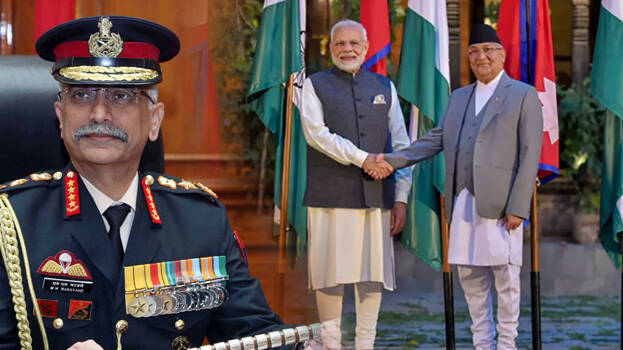
SOURCE: TNN
India and Nepal may be emerging from its sudden deep-freeze, when General MM Naravane travels to Kathmandu on November 4 on his second consecutive diplomatic mission. Visiting at the invitation of his counterpart, Gen Purna Chandra Thapa, Gen Naravane will be conferred the honorary rank of the commander of the Nepal Army, an old reciprocal tradition.
But Naravane’s visit is a lot more than that. Coming soon after an unusually publicised visit by the RAW chief, Samant Goel, it is a signal that New Delhi may finally be open to engaging Kathmandu, after a map fiasco earlier this year soured relations between the two countries. In fact it was Naravane’s comments about Nepal acting at “someone’s behest” (read China) that inflamed opinions in Kathmandu.
But whatever the vagaries of the political/diplomatic relationship between Kathmandu and New Delhi, the two armies have maintained their close relationship, even reaffirming that after the map fracas in May this year. For all the China-leanings of the Oli government, the army has retained close ties with India, US and UK defense establishments, which will make it difficult for them to change course towards Beijing.
It is this relationship that India wants to keep going, even as Oli remains a bad word in South Block. Oli has outsmarted his rivals Prachanda, Madhav Nepal and others to retain power despite a year-long rift within the communist party.
Prachanda has been in open rebellion for some time, refusing to communicate with Oli, but has been unable to unseat Oli. There are some recent signs that Oli is trying to heal the rift with Prachanda, as well as an incipient coming together of Prachanda and Madhav Nepal.
As for India, the past months since Nepal changed its map has been a space of official freeze. India has reached out to all its neighbours but has kept both Pakistan and Nepal out. In fact, India made an open distinction between no talks or engagement with the government, while at the same time keeping all its assistance projects and outreach to the Nepali people intact.
But in the meantime, China has made significant inroads into Nepal and Nepal PM Oli has maintained a studious silence. According to sources, The R&AW chief Goel apprised Oli of all the areas where China had moved into Nepali territory in what is seen by India as a blatant land grab exercise. They include districts such as Dolakha, Gorkha, Darchula, Humla, Sindhupalchowk, Sankhuwasabha and Rasuwa.
In fact the warning even came from Nepal’s own surgery and mapping department. China, it said, has pushed the international boundary 1.5 km towards Nepal in Dolakha including pushing the boundary pillar Number 57 in the Korlang area in Dolakha, which was previously located at top of Korlang. China has also relocated boundary pillars in Gorkha district and in Nampa Bhanjyang in Solukhumbu.






